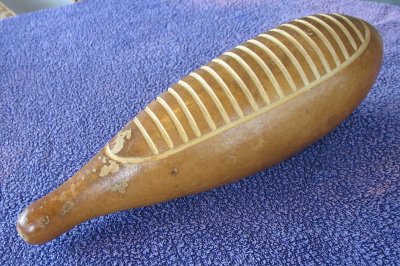-
Roots in charanga
Timba inherited some instrumentation from Cuban charanga ensembles, which traditionally featured flute and violins. These strings gave charanga its distinctive, elegant sound. Early timberos often came from a conservatory background, so the violin was already part of their musical vocabulary.
-
Orchestral flavor
Some timba bands, like NG La Banda or Los Van Van, occasionally incorporate violins or string sections to thicken the texture, add harmonic richness, or create contrast with the aggressive rhythm section.
-
Fusion and arrangements
Timba is known for blending funk, jazz, and classical influences. Violins sometimes appear in arrangements to highlight this fusion—either in intros, breakdowns, or as a dramatic color.
-
Live vs. studio
You’re more likely to hear violins in recordings (or larger concert settings) than in the typical touring timba rhythm section, which usually focuses on drumset, congas, timbales, bass, piano, and brass.
Timbales
History
Timbales were introduced in Cuban danzón during the late 19th century.
Here’s how it happened:
- The earliest danzón was played by orquestas típicas, which used heavier European-style timpani and military-style percussion.
- Around the 1870s–1880s, these large drums were replaced by the pailas criollas (what we now call timbales). They were lighter, more agile metal drums better suited for Cuban dance rhythms.
- This innovation helped shape the charanga francesa ensemble (flute, violins, piano, bass, güiro, timbales), which became the standard for danzón, danzonete, and later chachachá.
👉 So, the timbales first entered Cuban music through danzón and then became central to many genres afterwards ( mambo, salsa, songo, timba).
National dance of Cuba, evolved from danza.
Lees meer >Dances
- Danzón – The quintessential Cuban ballroom dance, elegant and formal, often seen as the "national dance of Cuba."
- Danzonete – A sung variant of danzón that became popular in the 1920s–30s.
- Cha-cha-chá – Created in the 1950s by Enrique Jorrín while playing with a charanga; specifically designed for charanga orchestras.
- Pachanga – A playful dance and rhythm from the late 1950s/early 1960s, closely linked to charanga bands.
- Mambo (in its earlier Cuban form) – Before the big-band New York mambo, charangas also played early mambo-style danzones.
- Charanga is a Cuban ensemble style and musical tradition that dates back to the early 20th century. It became especially popular in the 1940s–50s and played a crucial role in the evolution of salsa, timba, and Latin jazz.
Lees meer >Mambo
In Cuban music, especially in salsa and son,
the " mambo" section typically refers to a brassy, rhythmically intense instrumental break,
often featuring repetitive horn lines, call-and-response patterns, and building energy toward the climax of a song.
- Son traditional
- Son urbano
- Son montuno
- Son moderno.
Lees meer >Mambo
In Cuban music, especially in salsa and son,
the "mambo" section typically refers to a brassy, rhythmically intense instrumental break,
often featuring repetitive horn lines, call-and-response patterns, and building energy toward the climax of a song.

The güiro is central to danzón, cha-cha-chá, son, and salsa, and is a standard feature of charanga orchestras that popularized Cuban dance music in the 20th century.
Lees meer >Piano
Origins
Inventor: Bartolomeo Cristofori (1655–1731), an Italian instrument maker in Florence.
Date: Around 1700, Cristofori built the first instrument he called a “gravicembalo col piano e forte” — meaning harpsichord with soft and loud.
Reason for invention: Harpsichords (the main keyboard instrument of the 1600s) could not vary loudness by touch. Cristofori solved this by using hammers to strike strings instead of plucking them.
Mechanism: When a key was pressed, a felt-covered hammer struck the string, producing sound with dynamics depending on how hard or softly the key was played.
Timba, the explosive and rhythmically rich genre of Cuban dance music, transformed how the bass functions in popular music. In Timba, the bass is not just foundational — it’s fiery, funky, and free.
Lees meer >Piano
Origins
Inventor: Bartolomeo Cristofori (1655–1731), an Italian instrument maker in Florence.
Date: Around 1700, Cristofori built the first instrument he called a “gravicembalo col piano e forte” — meaning harpsichord with soft and loud.
Reason for invention: Harpsichords (the main keyboard instrument of the 1600s) could not vary loudness by touch. Cristofori solved this by using hammers to strike strings instead of plucking them.
Mechanism: When a key was pressed, a felt-covered hammer struck the string, producing sound with dynamics depending on how hard or softly the key was played.
Timba, the explosive and rhythmically rich genre of Cuban dance music, transformed how the bass functions in popular music. In Timba, the bass is not just foundational — it’s fiery, funky, and free.
Lees meer >